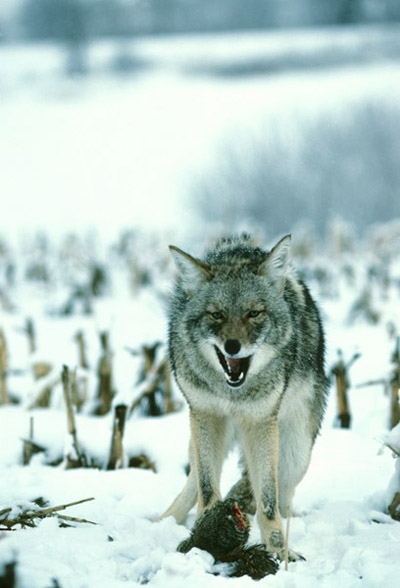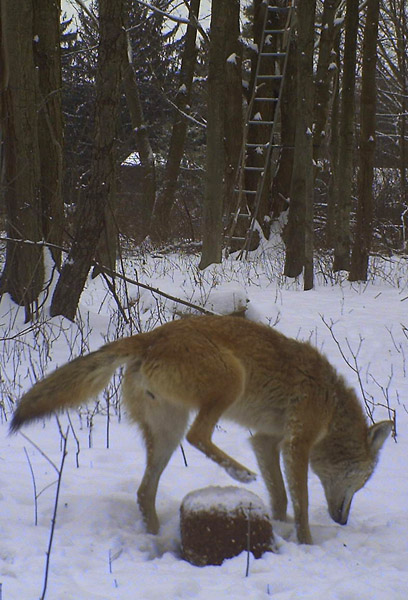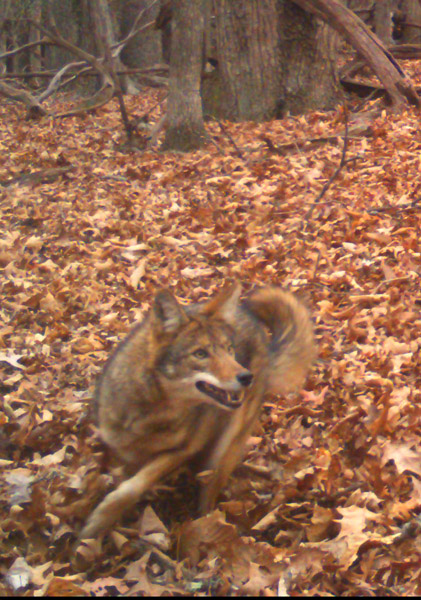LAST UPDATED: May 1st, 2015
Although wolf and coyote attacks on people remain rarer than death by lightning bolt, one wonders why wildlife agencies typically dismiss the incidents as freak occurrences or simple cases of mistaken identity. You might recall two coyotes killed folk-singer Taylor Mitchell, 19, of Toronto in October 2009 as she hiked alone in Nova Scotia’s Cape Breton Highlands National Park. A retired provincial biologist labeled the attack unusual, and said the coyotes might have thought Mitchell was a deer or other prey.
Today’s assumptions about coyotes evolved when their populations were low and prey like deer were abundant.
Humans can’t be prey? Since when, the 1900s? Given good opportunities and emboldened by experience, why wouldn’t hungry canids attack a vulnerable human? True, it’s rare for coyotes to kill humans, but Cape Breton’s park officials can’t claim the attack on Mitchell was unique. In his 1995 book, “Eastern Coyote: Story of Its Success,” Gerry Parker described two incidents when coyotes bit people at the same park.
Responding to Mitchell’s death in October 2009, Dr. Valerius Geist of British Columbia wrote that wolves and coyotes follow identical, eight-stage patterns to target alternative prey. Geist, internationally known for research into wild-animal behavior, said interviews with hikers and staff at the park showed its coyotes had reached the top stages for targeting humans. That is, when coyotes and wolves start perceiving humans as fearful and harmless – prey — the predators often make deliberate, drawn-out people “explorations” that go beyond watching and sniffing from a distance. At its peak, the predators’ targeting goes from licking and nipping humans, to confronting and attacking them.
When coyotes start perceiving humans as fearful and harmless – prey — they often make deliberate, drawn-out people “explorations” that go beyond watching and sniffing.
Coincidentally, researchers Lynsey A. White and Stanley D. Gehrt at Ohio State University published a study in the November-December 2009 issue of “Human Dimensions of Wildlife” that documented 142 media-reported coyote attacks on 159 people in the United States and Canada between 1960 and 2006. Granted, that’s an average of about three attacks annually, but minor incidents – such as thwarted attacks — aren’t always newsworthy. And until there’s a standard reporting system in North America, not every attack will be documented.
- Even so, the Ohio State researchers defined several patterns to attacks.
- 37 percent were “predatory,” meaning aggressive biting with serious injuries
- 22 percent were “investigative,” meaning the coyote was accustomed to people and “tested” the victim as possible prey
- 7 percent were by rabid coyotes
- 6 percent involved people trying to save a pet
- 4 percent involved coyotes defending themselves or their pups
- 24 percent couldn’t be classified
Of the predatory attacks, 52 percent involved children and 10 percent involved adults. Also, girls were attacked in slightly higher numbers than boys.
Further, 70 percent of attacks occurred in or near the victim’s yard, and 25 percent were in parks. Children were usually playing in yards or driveways. The victims were usually engaged in recreation such as jogging, hiking, bicycling, golfing or riding horses; but nearly 20 percent were resting or sleeping outside. Coyote attacks increase as the predators adapt to suburbs. California researchers in 2004, for instance, verified 48 attacks from 1998 through 2003, compared to 41 attacks from 1988 to 1997.
Why the ’burbs? They provide great hunting for rabbits, rodents and feeder-trained birds. They also provide endless supplies of cats, small dogs, and garbage-can cuisine: fruits and vegetables, and bones and scraps from fish, beef, pork and chicken. And the less coyotes fear humans, the more bold they become. Granted, coyote-inflicted injuries are few compared to those from domestic dogs. But as the California researchers note, Los Angeles’ 665,000 dogs swamp its estimated 5,000 coyotes.
The less coyotes fear humans, the more bold they become.
Geist says biologists are slow to acknowledge rising coyote problems because they have little direct knowledge of coyote – and wolf – behavior. Today’s assumptions about these predators evolved when their populations were low and prey like deer were abundant. In an e-mail to me and others on his distribution list, Geist wrote: “North American biologists have hopelessly muddled the understanding of (wolf and coyote) habituation and its consequences, in part by our Yellowstone colleagues in their ‘Disneyfication’ of wolves.”
Maybe it’s time to stop making excuses every time a predator doesn’t follow Disney’s script. It appears they’re learning more about us than we are about them.

 By
By 






